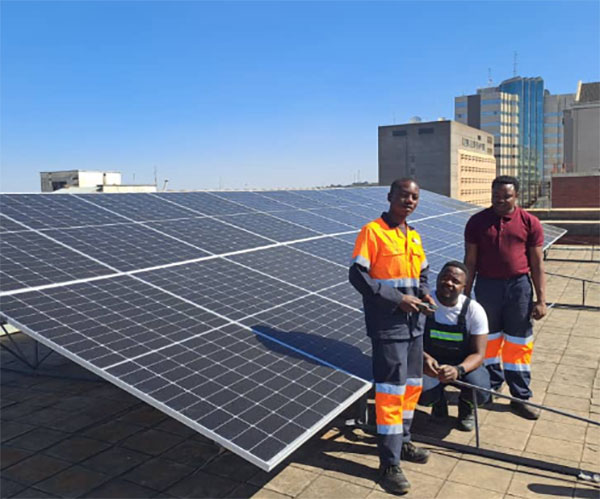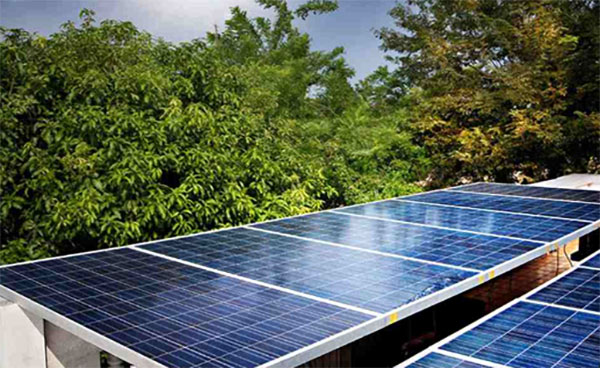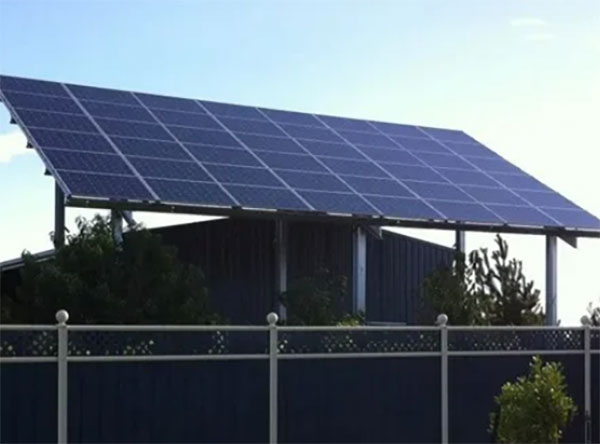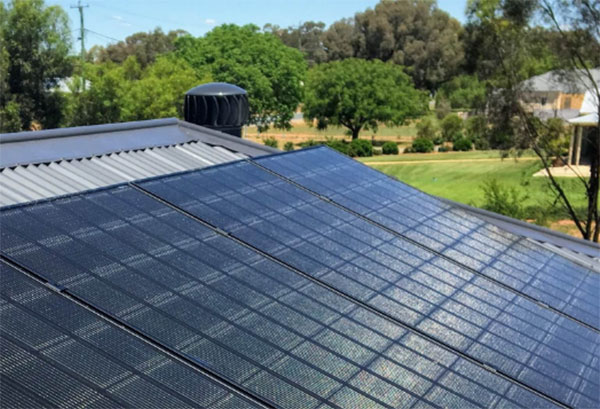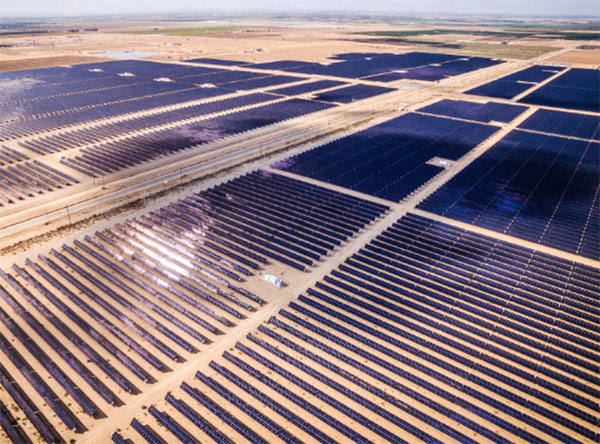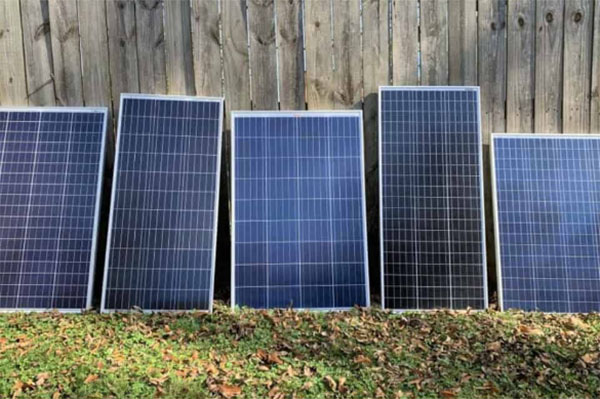Description
Yes, you can interconnect solar panels of different voltages, but it requires careful system design to balance and optimize performance and safety.Rationale for each of the topics along with examples.
Ensuring same voltage in parallel connections:
Connecting the solar panels in parallel requires that each panel has the same voltage. Solar panels connected in parallel have the same voltage on their output sides and different voltages on their input sides. The purpose of parallel connections is to increase the current. When connections have different voltage values, the solar panel may draw power ineffectively, leading to increased power and energy use and potential damage to other components.Matching current for series connections:
In a series connection, the same current flows through all panels. To maximize the system's power output, the panels' current capabilities must match. The series connection is designed to increase the voltage. Therefore, the panels' voltage ratings must be as accurate as possible to ensure compatibility.Power degradation:
Solar panels degrade over time, losing some of their power output. For instance, high-quality panels can maintain up to 90% of their initial power after ten years, while lower-quality panels may degrade to 80%. When connecting new panels with older, degraded ones, it's important to balance the system to ensure safe and effective energy production.Cost and Efficiency Trade-offs
Mixing panels often involves a trade-off between cost and efficiency. Higher efficiency panels have a higher upfront cost but produce more electricity per square foot, potentially offsetting the initial investment over time. Lower efficiency panels are cheaper initially but may require more space and produce less power, leading to higher land costs.Matching Dimensions and Specifications
When mixing panels, their physical dimensions and specifications should be matched. Differences in size or weight can make installation challenging and may result in incompatibility with the mounting system. It's crucial to ensure that the electrical parameters, such as voltage and current, are compatible when connecting panels in series or parallel.Quality and Performance Consistency
Mixing panels of varying quality can lead to inconsistent system performance. The best approach is to choose panels from the same manufacturer or those with similar construction and quality standards to maintain a reliable and efficient solar energy system.Maximizing Efficiency with Mixed Panels
Ideal Mixing Strategies
An effective strategy for mixing panels involves understanding the system's requirements and selecting panels that complement each other in terms of power output, voltage, and current ratings. High efficiency panels with ratings of 330W to 400W can be effectively mixed with standard panels rated at 250W to 300W.Utilizing MPPT Charge Controllers
MPPT charge controllers ensure that each panel operates at its maximum power point, increasing the overall system efficiency by up to 30%, especially when dealing with mixed panels of varying specifications.Implementing Microinverters for Optimization
Microinverters, attached to each panel, allow for independent operation, increasing the system's output power by up to 10% by optimizing the performance of each panel, regardless of the conditions.Advanced Configurations for Diverse Panels
Combination of Series and Parallel
Using MPPT charge controllers is essential for installations with mixed panel types, such as Schott and Motech. These controllers maximize power transfer to the batteries and ensure each panel operates at its maximum efficiency under varying conditions like sunlight intensity or temperature, potentially increasing overall system efficiency by up to 30%.Individualizing Panel Output – Use of Microinverters
Microinverters enable each panel to function independently, enhancing the overall efficiency of the system by compensating for power loss due to shading or orientation differences. This individualization ensures that each panel maintains its optimal output, contributing to a more effective energy harvest.Mixing Panels of Different Ages, Materials, and Efficiencies
Safety and effectiveness are paramount when mixing panels of different ages, materials, and efficiencies. Combining premium panels with a degradation rate of 0.5% per year and a 25-year warranty with economy panels that have a degradation rate of 0.8% and a 10-year warranty can create a balanced system. Advanced inverter technologies help to manage the mixed panels connection, ensuring both effectiveness and safety.Practical Steps for DIY Projects
Planning the Solar Array Layout
The initial step in any DIY solar project is to plan the solar array layout, including the number of panels, their location, and orientation for maximum sunlight exposure. South-facing roofs are typically optimal in the Northern Hemisphere, while north-facing roofs are preferred in the Southern Hemisphere. The angle of the panels should be adjusted based on the latitude, with the ideal tilt in the United States being equal to the latitude. Each panel requires approximately 50 square feet of open space.Ensuring Adequate Wiring and Connectors
Selecting the appropriate wiring and connectors is crucial for the solar array's effectiveness and safety. The wire gauge should be chosen based on the system voltage and current, as well as the distance between the panels and the controller or inverter. A 10 AWG wire is usually sufficient for a 12-volt system with a 200-watt panel string. Solar-rated wiring should be used, capable of withstanding outdoor conditions and UV exposure. Connectors must be compatible with the panels and rated for outdoor use, with appropriate protection and sealing.Connecting Panels to Charge Controller
Connecting solar panels to a charge controller is a vital part of the DIY process. The charge controller should be chosen based on the total wattage of the solar panels and the battery type. For a 12-volt battery bank charged by a 200-watt solar array, a 20-amp charge controller is suitable. The positive and negative leads from the panel strings should be securely connected to the corresponding terminals on the charge controller, following the manufacturer's instructions to ensure the battery's safety and optimal charging.Brand Consideration/Panel Selection
Brand considerations are key to the efficient and reliable operation of a solar array system, even when mixing panels.Mixing: Different Brands and Similar Specs
When mixing panels, it's best to look for brands that offer similar specifications. For example, a 300W panel from Brand A with an 18% efficiency rate can be effectively mixed with a similar 300W panel from Brand B.The Reality Behind ‘Exact Match’ Panels
Achieving an 'exact match' in panel specifications can be challenging due to minor variations in the manufacturing process. It's important to recognize that 'exact match' is a relative term and that minor discrepancies are acceptable, as long as the panels are within a reasonable range of specifications to maintain system efficiency and avoid issues.Five Tips to Mix and Match Solar Panels
- Research panel specifications: Thoroughly research the specifications of different panels from various brands, focusing on power output, efficiency, voltage, and current ratings.
- Consider age and degradation rates: Match the age and expected degradation rates of the panels to ensure balanced system performance throughout their lifespan.
- Match voltage and current ratings: Combine panels with compatible voltage and current ratings to avoid performance issues.
- Quality over cost: Prioritize the quality of the panels over the quantity, as higher quality panels may have a higher initial cost but offer better performance and a longer lifespan.
- Consult with a solar professional: If unsure about mixing different types of panels, consult a solar professional or certified technician for guidance.

